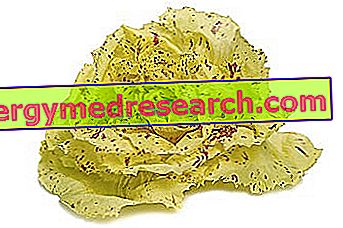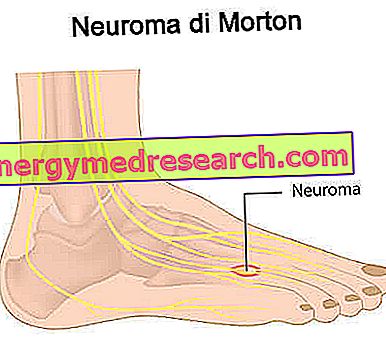Generality
"Paté" is a French term that literally means "mess " ; to its discovery the culinary methodological differentiation of the various techniques of "patisserie", or of pastry, is to be compared.

Paté is a crushed or minced food, with a soft and / or spreadable consistency, based on cooked ingredients such as: offal, meat, fish products, vegetables, etc. It can be eaten fresh or at room temperature.
The essential ingredients for the formulation of the paté are:
- main element or elements (cooked according to the right procedure)
- a fat source (butter, oil, lard, margarine)
- salt, spices and aromatic herbs.
The process for the production of the pâté includes: cooking of the essential ingredient, mortar beating with fat, salt and spices, and final cooling. NB . Paté is NOT synonymous with mousse.
Historical notes on paté: the most famous paté is the French one of goose fat liver (foie gras); this food product, which is produced with the offal of animals subjected to forced fattening (an ethically unacceptable practice), represents nothing but the evolution of much older techniques. Already 1500 years before the birth of Christ, in the Middle East and North Africa - and later in the classical era with the Roman people - it was learned that, by forcing the feeding of cattle for slaughter, it is possible to obtain a bigger, fat liver (effect of fatty hepatic steatosis) and intense taste. The ancestor of the foie gras pâté is the Roman ficantum (a food obtained from the fattening of cattle with figs).
Hygienic aspects
Conservation: paté is a rather delicate food; is born with the intent to provide a tasty and easily conservable dish but, after a thorough analysis, it seems that the maintenance of the pâté is not a feature to be overlooked. First of all, it is essential that the pâté is kept at low temperatures to reduce bacterial proliferation. Furthermore, we remind you that, if NOT added in antioxidants, the product tends to turn brown and go rancid very quickly. To avoid this deterioration it is also a good idea to coat and under-empty the paté during refrigeration or, alternatively, immerse it in edible gelatin.
WARNING! Paté is a product with a high risk of bacterial contamination; despite being rich in added fats, its shelf life is inevitably compromised by the finest cut of the cooked ingredients; these, coming into contact with atmospheric bacteria or worktops or the operator himself, are characterized by a very large contact surface and provide already partially digested nutrients (thermal hydrolysis and physical denaturation) favoring the differentiation of pathogens. One of the most frequently affected microorganisms in canned paté is also one of the most dangerous, Clostridium botulinum .
Gastronomic characteristics
The paté can be consumed fresh, compacted, thinly sliced, spread on bread, inserted into other cooked preparations, etc. The liver and / or meat paté in a crust (of bread, brisé, puff pastry etc.) and the terrine paté are well known.
There are also sausages; among the best known are: the leverworst or leberwust, the meatloaf and the leverpostej.
From the technological food point of view, some different forms of conservation have been developed with respect to the classic refrigeration; an example is the paté in tube and the paté in small box. On a global level, this last technique is more interesting than the traditional paté.
The paté should be consumed in a food and wine association with different products based on the composition of the food itself; in general, for those of meat and offal, perfumed and dry wines are preferred with alcohol content proportional to the fatness of the dish.
Nutritional properties
Patés are not all alike but are generally common due to their high total lipid and caloric intake. Lipids - added or proper to the main ingredient - can have a prevalence of saturated fatty acids (if deriving from animal sources: liver, meat, butter, lard etc.) or unsaturated (if deriving from vegetable sources: olives, vegetable oil etc. .). All pâtés are foods contraindicated in the case of a low-calorie diet aimed at weight loss, but while the former have a negative effect on cholesterol metabolism, the latter should be at least harmless (depending on the type of oil used in the formulation).
All pâté based on meat and / or liver are very rich in cholesterol and iron (mineral salt often lacking in people with iron deficiency anemia).
Black Olives Paté
X Problems with video playback? Reload from YouTube Go to Video Page Go to Video Recipes Section Watch the video on youtubeNutritional values
Nutritional composition for 100g of rabbit, liver, chicken and ham paté - Reference values of the food composition tables - INRAN
| Rabbit pate | Liver pate | Chicken paté | Ham paté | ||
| Edible part | 100.0% | 100.0% | 100.0% | 100.0% | |
| water | 51.7g | 51.5g | 55.4g | 49.8g | |
| Protein | 13.0g | 12.7g | 11.1g | 11.3g | |
| Prevailing amino acids | - | - | - | - | |
| Limiting amino acid | - | - | - | - | |
| Lipids TOT | 32.2g | 31.7g | 26.2g | 34.3g | |
| Saturated fatty acids | - g | - g | - g | - g | |
| Monounsaturated fatty acids | - g | - g | - g | - g | |
| Polyunsaturated fatty acids | - g | - g | - g | - g | |
| Cholesterol | - mg | 169.0mg | - mg | - mg | |
| TOT Carbohydrates | 1.1g | 1.3g | 2.3g | 1.1g | |
| Complex sugars | - g | - g | - g | - g | |
| Soluble sugars | - g | - g | - g | - g | |
| Dietary fiber | 0.0g | 0.0g | 0.0g | 0.0g | |
| Soluble fiber | 0.0g | 0.0g | 0.0g | 0.0g | |
| Insoluble fiber | 0.0g | 0.0g | 0.0g | 0.0g | |
| Power | 346.0kcal | 341.0kcal | 289.0kcal | 358.0kcal | |
| Sodium | - mg | 790.0mg | - mg | - mg | |
| Potassium | - mg | 160.0mg | - mg | - mg | |
| Iron | 4.2mg | 4.1mg | 4.5mg | 3.8mg | |
| Football | 14.0mg | 19.0mg | 14.0mg | 13.0mg | |
| Phosphorus | 130.0mg | 123.0mg | 125.0mg | 113.0mg | |
| Thiamine | - mg | - mg | - mg | - mg | |
| Riboflavin | - mg | - mg | - mg | - mg | |
| Niacin | - mg | - mg | - mg | - mg | |
| Vitamin A | - µg | - µg | - µg | - µg | |
| C vitamin | 0.0mg | 0.0mg | 0.0mg | 0.0mg | |
| Vitamin E | - mg | - mg | - mg | - mg | |



